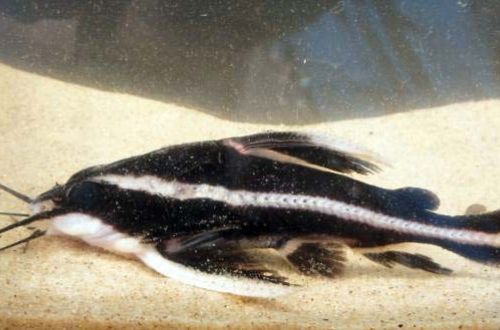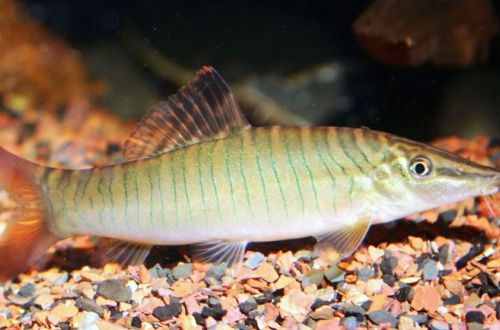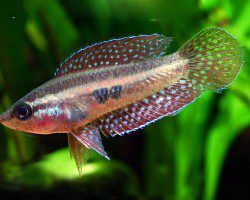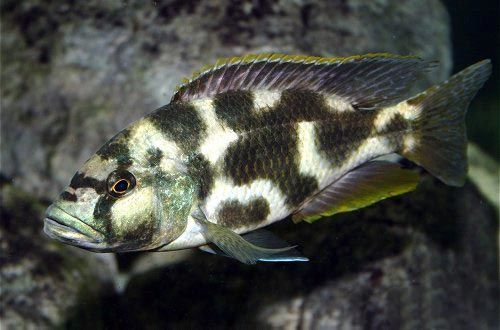
Platidoras blue-eyed
Blue-eyed Platydoras, scientific name Platydoras hancockii, belongs to the family Doradidae (Armored Catfish). The catfish is native to South America. It is found throughout the Amazon Basin from Guyana and the eastern states of Brazil to Peru and Bolivia.

Often supplied under the erroneous name Amblydoras Hancockii (Amblydoras hancockii). There is no species with this name and, apparently, it means the catfish Amblydoras naticus.
Description
Adult individuals reach a length of up to 15 cm. The body of the catfish is “shackled” in armor made of hard bone plates. The head and thoracic region are a solid shell. Along the lateral line is a row of sharp spines. The fins are rigid, and their first rays have changed into pointed blades. The coloration is dark gray with a pattern of a light line stretching along the body. Males are thinner than females.
Behavior and Compatibility
Calm not aggressive catfish. Blue-eyed Platidoras gets along well with most species, even with those who are not very friendly towards their neighbors. Reliable armor perfectly protects against the teeth of small predators, so the number of compatible species is not limited to only peaceful fish. Feels good both alone and in the company of relatives.
Brief information:
- The volume of the aquarium – from 70 liters.
- Temperature – 23-28°C
- Value pH — 6.0–8.0
- Water hardness – 5–19 dGH
- Substrate type – any
- Lighting – subdued
- Brackish water – no
- Water movement – light or moderate
- The size of the fish is up to 15 cm.
- Food – any sinking food
- Temperament – peaceful
- Content – alone or in a group
Maintenance and care, arrangement of the aquarium
The optimal size of the aquarium for one catfish starts from 70-80 liters. In the design, the presence of shelters in which the fish could hide completely is of key importance. For example, it can be crevices, caves or grottoes formed from snags, heaps of stones.
Prefers subdued lighting levels. During the daytime, it will tend to hide in cover.
Safe for plants. When decorating a space, it is acceptable to use most of the available rooting and floating species.
Unpretentious, able to adapt to a wide range of hydrochemical parameters. Such endurance greatly simplifies the maintenance of the aquarium. Nevertheless, a number of mandatory procedures cannot be neglected: weekly replacement of part of the water, removal of organic waste and equipment maintenance.
Food
Omnivorous, accepts most popular foods. Eat whatever it finds at the bottom. It can be dry flakes, granules, live or frozen food. It feeds mainly at night.





